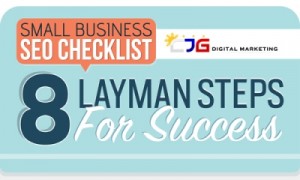Google AdWords is an incredibly powerful tool that can help build brand awareness and maximize sales potential. But, when you’re unable to achieve these results, it’s extremely frustrating. There are a number of factors that could be contributing to your underperforming campaigns. In this post, we’ll go over some of the best strategies you can use to improve your Google AdWords management skills and get your campaigns back on the right track.
Google AdWords Management Checklist
1. Keyword Selection
While you may consider it an elementary aspect of Google AdWords management, keyword selection is still an incredibly important success factor. In fact, using the wrong keywords can completely derail your campaigns. In order to reach the right consumers, you need to be strategic with your keyword selection.
Do your research, and find the best opportunities for long-tail keywords with low to medium competition. Not only are high competition, short-tail keywords expensive, but they’re also very difficult to rank for. For example, if you sell coffee, you wouldn’t want to target a keyword like “coffee beans.” The competition would be out of control:

You should also aim for keywords that show buyer intent. For example, if you sell a CRM software, you’d probably want to target keywords like “best CRM pricing.” People searching for prices for CRM software are likely to be further down the sales funnel than people searching for basic information (e.g. “What is CRM?”)
If you’re out of ideas, you can always use Google Keyword Planner’s suggested keywords. Or, check out the related searches at the bottom of the search engine results page (SERP). There are often a lot of great ideas there that you may not have thought of on your own—just be sure to check their search volume and competition.


2. Change Keyword Match Type
In AdWords, there are actually several match types to choose from:
- Exact Match. When you select exact match, your ads will be triggered for searches that match your keyword exactly. It can also be triggered by a close variation (e.g. word reordering or added prepositions, articles, or conjunctions) so long as it has the same meaning. For example, if your keyword is [kid’s shoes], your ad may be triggered by a search for shoes for kids.
- Phrase Match. With this match type, your ads will be triggered for close variations of the keyword phrase or include the keyword phrase in between other words. However, your ads won’t be shown if there is an extra word inserted in the middle of the keyword. For example, if your keyword was “men’s shirts,” your ad might be triggered for a search like large men’s shirts, but not men’s large shirts.
- Broad Match. This is the default for all your keywords. When you select this match type, your ads will be triggered on closely related searches including variations, synonyms, and misspellings. For example, if your keyword was dog collars, your ad may still be triggered when someone searches for collars for dogs, or puppy collars.
If you choose “broad match type,” you may end up getting a lot irrelevant clicks. Instead, opt for “exact” or “phrase” match types. This will help you regain control of the types of searches that trigger your ad.
However, if none of these options sound ideal to you, there’s actually another option called “broad match modifier.” Even though your ad may be triggered by a related search instead of an exact search, you can tell Google which words have to be included in the search term by adding a plus in front of the word. For example, +dog +collar would only work with searches like how to buy a dog collar or best dog collar. However searches like, pet collars would not trigger your ad sense they don’t include the word “dog.”
Additionally, you can add negative keywords. This allows you to tell Google which words you don’t want your ads to be triggered for. For example, if you own a bakery but you don’t make sugar cookies, you could add “sugar cookies” as a negative keyword. This would eliminate the chance of you wasting money on anyone searching for bakeries that make sugar cookies. A good way to use negative keywords is to monitor the searches that are triggering your ad. When you catch an irrelevant term, add it to your negative keyword list. Just be sure to change the match type for your negative keywords to “exact.”
3. Use Single Keyword Ad Groups (SKAGs)
Google actually recommends using 15 to 20 keywords per ad group—but we’re going to have to disagree with the search engine giant on this one. Ad groups that are stuffed to the gills with only somewhat related keywords are likely to waste a big portion of your ad budget. Not only is it unlikely that all the keywords you’re using will be strictly relevant to your offer, but it’s virtually impossible for you to maintain message match between your keyword, ad, and landing page.
We’ve seen people pack as many as 50 keywords into one ad group (yikes!) For one client, we replaced their overstuffed ad groups with 80 SKAGs. Using only the most relevant keywords for their offer, we were able to significantly improve their campaign results and reduce their average cost per conversion by 78 percent:

4. Closely Monitor the Data
In order to make continuous improvements, you need to closely monitor your campaign data. This is what separates the champions from the rookies. Before you can start monitoring the amount of conversions that come from your ad campaigns, you need to install tracking codes on your website.
For bonus points, link AdWords with your Google Analytics account. This allows you to not only track the amount of conversions coming from your ads, but also the other parts of your site that consumers visit before they do or don’t convert (whether that be buying a product or downloading an ebook). You’ll also be able to tell which keywords have higher bounce rates and which ones have the most engagement.
Using your findings, you’ll be able to adjust your campaigns and make them better. You can also generate reports within AdWords that will point out areas for improvement. For example, you may notice that the majority of your conversions are happening in the evening. If that’s the case, you might consider raising your bid during the evening hours (which can be done from the ad schedule in the campaign settings tab). If you notice that conversions are also higher on certain days, you could raise your bid to be higher on those specific days as well.
5. Remember, the Conversion Process Doesn’t End with the Ad
Once a consumer clicks on your ad, your job isn’t over—you need to think about where they end up. In fact, your landing page is just as important as your ad. Even if you spend ages perfecting the right keyword strategy, ad copy, and bidding structure, none of it will mean squat when your lead reaches some crummy landing page.
In order to increase your chances of a conversion, you need to make sure that your landing page matches your ad offer and keyword. You also need to make sure that it has an attractive design, it’s easy to browse, and it loads within three seconds—most consumers won’t stick around much longer than that.
6. Don’t Underestimate the Opportunities Feature
You may or may not already know that Google has an opportunities tab in which it identifies specific areas for campaign improvement. For example, it may point out that there are other related keywords (LSI keywords) that you should consider adding, or that your bid could be better optimized. Of course, you should never just blindly follow whatever Google suggests. Instead, use it as a helpful guideline. You’ll have to use your own good sense in determining which changes to make.

7. Campaigns Types: Consider Remarketing
If you’re not currently running any retargeting or remarketing campaigns, you’re missing out on one of Google AdWord’s best features. Retargeting campaigns allow you to advertise to consumers who have visited certain areas of your site but have not converted. Because these consumers have already demonstrated an interest in your products and services, they’re likely to make a purchase—all they need is a little reminder. In order to use this feature, however, you must have your tracking code set up.
Final Takeaways on Google AdWords Management
While it doesn’t take a mastermind to set up an AdWords campaign, optimizing it for best performance is a bit trickier. Now that you’ve read the tips outlined in this post, you can start studying your campaigns for areas of improvement and begin the mending process. After a while, you should start to see some big improvements. For more information on how to improve your AdWords campaigns or for some assistance in doing so, contact our Google AdWords management agency today. our team of experts is standing by, ready to help.
Digital & Social Articles on Business 2 Community(50)








